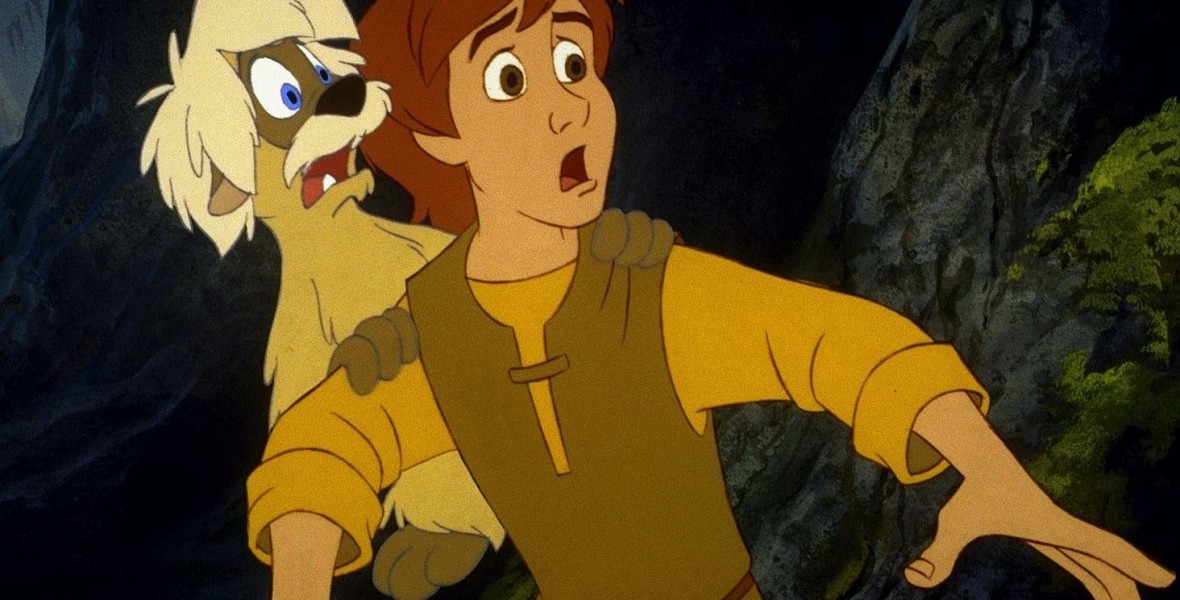Black Cauldron, The (film) Story of young Taran, a pig keeper, who attempts to rescue his clairvoyant pig, Hen Wen, from the Horned King’s castle. The King tries to get Hen Wen to lead him to the mysterious Black Cauldron. Taran escapes with a young princess and a minstrel, and with the help of mischievous Gurgi, finds the Cauldron. Before they can destroy it, it is taken by the Horned King, who begins to unleash its awesome power of producing deathless warriors. Gurgi sacrifices himself to destroy the Cauldron’s power and save his friends, but in the end, Taran defeats the Horned King and Gurgi is restored. Released on July 24, 1985. Directed by Ted Berman and Richard Rich. Filmed in 70mm stereo-surround Technirama. Features the voices of John Hurt (Horned King), Grant Bardsley (Taran), John Byner (Gurgi), Susan Sheridan (Eilonwy), Freddie Jones (Dallben), Nigel Hawthorne (Fflewddur Fflam), Phil Fondacaro (Creeper). 80 min. The production can be traced back to 1971, when the Disney Studio purchased the screen rights to Lloyd Alexander’s The Chronicles of Prydain. The five-volume mythological fantasy had been published in the mid-1960s to critical acclaim and commercial success. Adapting Alexander’s books with their numerous story lines and cast of over 30 major characters proved to be a time-consuming task. Several important writer/animators worked on the development of a screenplay through the 1970s until Joe Hale was named producer in 1980. He rewrote the script, capsulizing the sprawling story and making some changes. For instance, the Horned King was a minor character in the series but since he had so many possibilities, Hale expanded his role, making the villain a composite of several characters from the books. Filmmakers took advantage of the latest technology, which became essential in the completion of the film. Video cameras gave animators and directors an immediate and inexpensive record of what their efforts might look like. Computers also made inroads in the manipulation of solid inanimate objects on screen. The dimensions and volume of objects were fed into a computer and then their shapes were perfectly maintained as their movement was generated by programming. Disney’s venerable multiplane cameras were updated with computers to expedite and control aperture settings and time exposures. Another technological breakthrough was the development of the APT (Animation Photo Transfer) process. The first major change in the Studio’s method of transferring the artist’s drawings to a cel since photocopying replaced hand inking 20 years earlier, the APT greatly improved the quality of the animator’s art. In all, the animated film was 12 years in the making—five years in actual production—at the cost of over $25 million. Over 1,165 different hues and colors were implemented and over 34 miles of film stock was utilized. This was the first animated Disney film made in cooperation with Silver Screen Partners II. The sheer lavishness of the production, however, did not guarantee huge grosses, and the film was a box office failure. David W. Spencer was awarded an Academy Award for his development of the APT process. Released on video in 1998.


